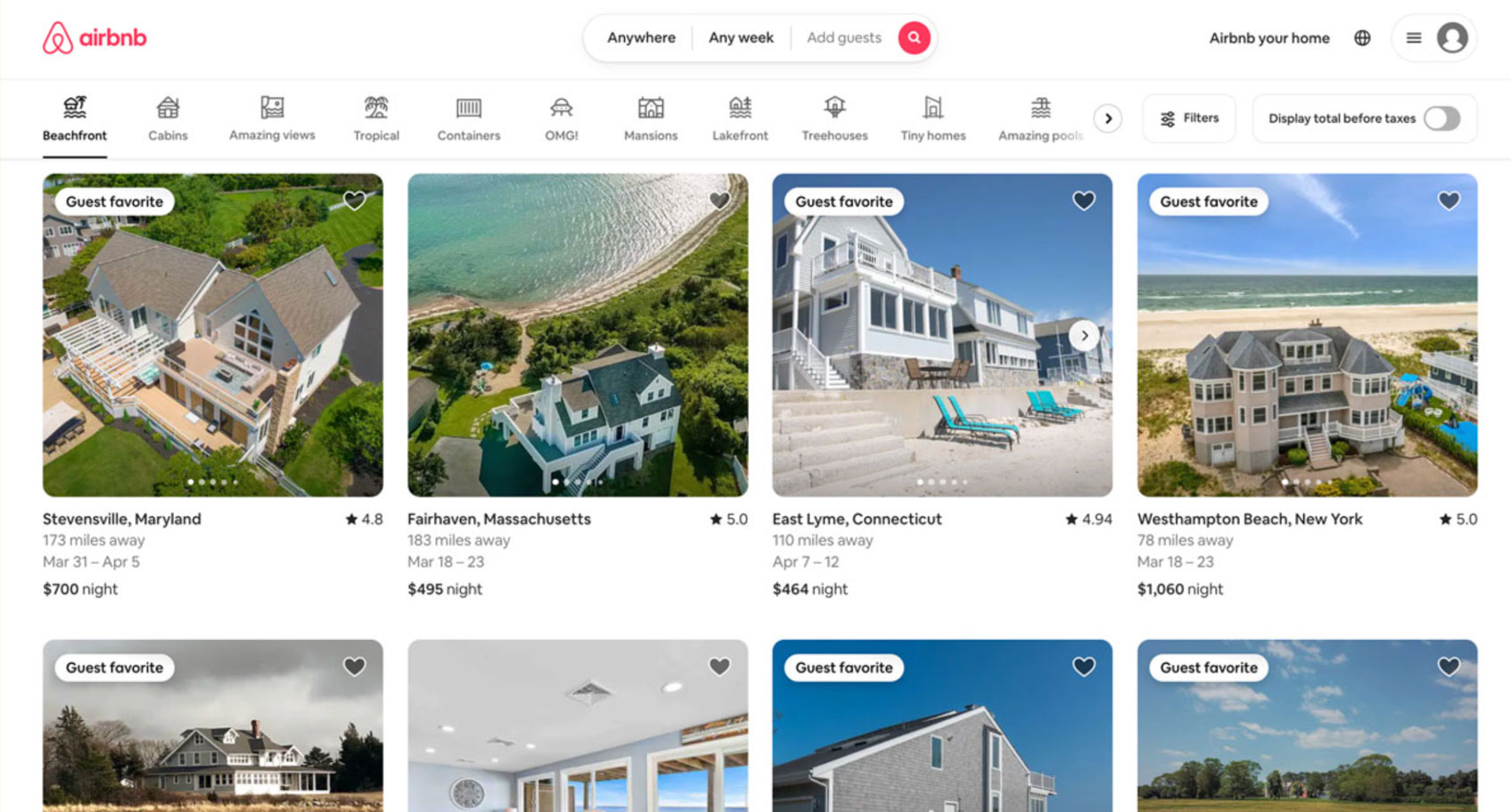Emotional design delves into creating products that elicit positive feelings in users, thus fostering a stronger connection and enhancing user engagement. This design philosophy, popularized by UX trailblazer Donald Norman, underscores the profound impact of emotions on how users interact with and perceive products.
Why is Emotional Design Important?
Emotional design doesn't just aim for usability; it seeks to weave delight, joy, and even surprise into user experiences, making interactions not just functional but memorable. Through strategic use of color, typography, imagery, and narrative, designers can tap into users' emotions, influencing how they engage with products. Below, we’ll look at some examples of companies and apps that have successfully leveraged emotional design thinking.
Airbnb: A Case Study in Trust and Belonging
Airbnb leverages emotional design by crafting an experience that emphasizes trust, belonging, and personal connections.
Airbnb uses storytelling throughout its listing design, allowing hosts to share the unique stories of their homes. The platform also personalizes the user experience by recommending listings based on previous searches, bookings, and reviews, making users feel understood and valued.
By prominently featuring user reviews, Airbnb also leverages social proof to build trust and credibility. This aspect of emotional design reassures users, making them feel more comfortable and secure in their booking decisions.
UI also plays an important role in Airbnb’s emotional design strategy. High-quality, warm, and inviting photographs help potential guests envision themselves in the space. The platform encourages hosts to use photos that not only highlight the space but also convey the atmosphere and experience of staying there.

Fitbit: Gamification and Positive Reinforcement
Fitbit uses gamification to turn physical activity into a game where users can track their steps, sleep, and other health metrics.
Fitbit awards badges for various milestones, such as walking a certain number of steps in a day or climbing a set number of floors. These badges serve as visual symbols of accomplishment, tapping into users’ desire for achievement and recognition. The emotional satisfaction derived from collecting badges encourages continued use and engagement with the device.
Fitbit also sends personalized notifications, encouragements, and reminders to move, which act as positive reinforcement. These messages are designed to be uplifting and supportive, providing a nudge towards activity in a friendly way. The emotional design aspect here lies in making users feel personally coached and cared for, enhancing the sense of connection with the device.

These design choices are rooted in positive reinforcement, which in turn helps to encourage healthier habits.
Slack: Enhancing Workplace Communication with Fun and Ease
Slack revolutionizes workplace communication by infusing fun and ease into its design.
For instance, Slack's interface uses a conversational tone in its messaging, notifications, and even in error messages. This approach makes interactions feel more personal and less robotic, helping to build a connection between the user and the product.

Slack is also designed to be intuitive and easy to navigate, even for first-time users. This reduces frustration and creates a positive first impression, which is crucial for long-term engagement. The platform's seamless integration with other tools and services also adds to the overall positive experience by making users' work processes more efficient.
Slack also has a range of customization options, allowing users to create a space that feels uniquely theirs, fostering a deeper emotional attachment to the platform and cultivating fun and delight in UX.
Spotify: Personalization and Discovery
Spotify stands out for its emotionally intelligent design that personalizes the music listening experience.
Through features like "Discover Weekly" and "Year in Review," Spotify uses data analytics to curate music selections tailored to each user's preferences, creating a deeply personal and engaging experience.
Spotify's interface is visually appealing and user-friendly, with album art, artist images, and visually engaging storytelling elements in features like "Spotify Wrapped." The end-of-year Wrapped feature, in particular, provides users with a personalized summary of their listening habits over the year, creating a highly engaging and emotionally resonant experience that users look forward to and share widely on social media.
Through these strategies, Spotify uses emotional design to create a user experience that is not just about listening to music but about feeling understood, connected, and part of a larger music-loving community.

Impact on User Engagement
The examples above illustrate the tangible benefits of emotional design in enhancing user engagement. By fostering positive emotions, products can achieve higher user satisfaction, increased loyalty, and stronger brand connections. Emotional design also contributes to reduced user frustration, making it more likely for users to explore additional features and recommend the product to others.
Moreover, emotional design can differentiate products in a crowded market. In an era where functionality and performance often reach parity across competitors, the emotional resonance of a product can be a decisive factor in user preference and engagement.
Conclusion
The impact of emotional design on user engagement is unmistakable. By focusing on the emotional connection between the product and its users, designers can create experiences that are not only functional but also delightful and engaging.
As technology continues to evolve, the principles of emotional design will remain vital in creating products that resonate with users on a deeper level, fostering engagement and loyalty in an increasingly digital world.
Interested in learning more about the impact of UX? Check out these other articles:
Voice User Interface (VUI) Design Best Practices
Microinteractions: Enhancing User Experience Through Small Details
Designing for Generation Z: Understanding the Next Wave of Users



.svg)







%20(1)-min.png)






